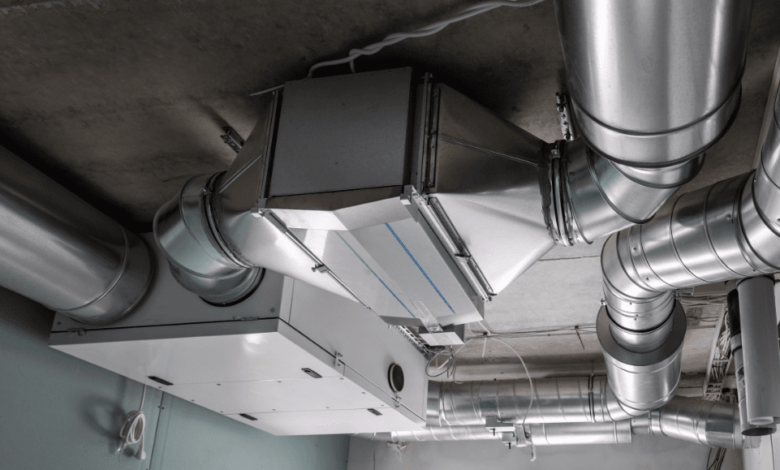Heat Recovery Ventilation Systems: Are They Necessary in Offices with Hybrid Working?

The rise of hybrid working, which combines office and remote work, has significantly changed how office spaces are designed and managed. Reduced occupancy in offices affects ventilation system loads, energy consumption, and indoor climate. In this context, heat recovery ventilation, or MVHR office ventilation system, have become not just relevant but essential for maintaining optimal conditions in modern offices.
Why Is Heat Recovery Ventilation Crucial in These Conditions?
Heat recovery ventilation systems are uniquely suited to handle these changes due to their efficiency and adaptability. They ensure high-quality ventilation, minimise energy consumption, and maintain a stable indoor climate, regardless of occupancy levels.
The main benefits of MVHR systems for hybrid offices include:
- Energy Efficiency
In offices with hybrid working, ventilation systems don’t always need to operate at full capacity. With heat recovery, the extracted air transfers its heat to the incoming fresh air, reducing the need for heating or cooling. This significantly lowers energy bills, even when office use fluctuates. - Operational Flexibility
Modern MVHR systems can be equipped with presence or CO₂ sensors. These allow the system to automatically adjust airflow rates based on the number of people in the office. - Air Quality Maintenance
Air quality is critical for employee health and productivity. Heat recovery systems ensure a continuous supply of fresh air, even when the office is partially occupied. This reduces the risk of CO₂ buildup, unpleasant odours, or excessive humidity. - Comfort and Climate Stability
By recovering heat, the system helps maintain a comfortable indoor temperature, regardless of weather conditions. This is particularly important for offices with large windows or open-plan layouts, which are more susceptible to temperature fluctuations.
How to Optimise Ventilation for Hybrid Working Offices
To ensure effective ventilation in offices with hybrid working, several factors should be considered:
- Integration of Automation. Using presence or CO₂ sensors enables the system to optimise its performance based on occupancy levels.
- Air Distribution. The system should provide even air distribution throughout the office, regardless of which areas are occupied.
- Regular Maintenance. Even with lower office usage, ventilation systems require regular cleaning and inspection to maintain efficiency.
- Consider Zoning. Large offices with diverse functionalities can benefit from zoning, where separate ventilation parameters are set for different areas to optimise costs.
According to Ecostream, the rise of hybrid working has made offices more dynamic while introducing new challenges for ventilation systems. In this context, heat recovery ventilation systems are an ideal solution, offering high-quality air circulation, energy efficiency, and a comfortable indoor climate, regardless of occupancy levels.
Investing in a modern MVHR system not only enhances the energy efficiency of an office but also supports the health and productivity of its employees. This approach ensures that office spaces remain adaptable to changing work patterns while maintaining comfort and functionality.





